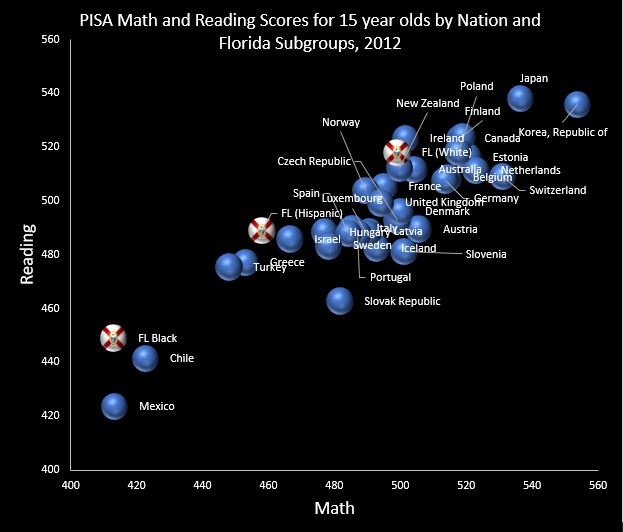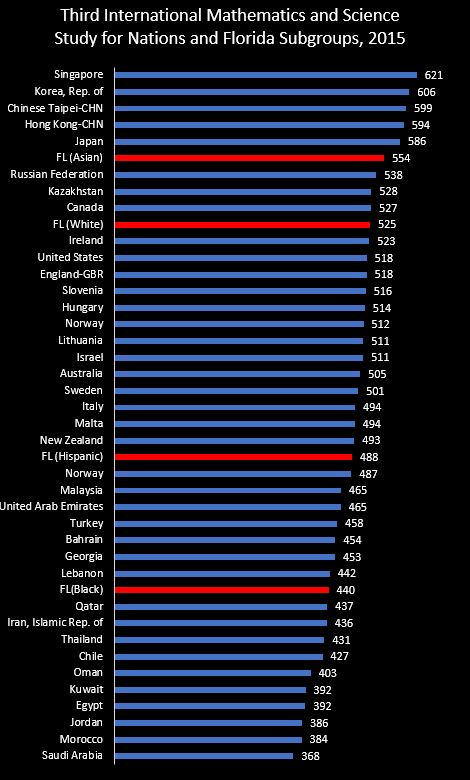Several weeks ago, we looked at American racial achievement gaps in math and reading from an international perspective using data from the Program for International Student Assessment, an international test that every three years measures reading, mathematics and science literacy of 15-year-olds.
In 2012, the PISA exam included subgroup specifically for Florida. Let’s take a look:
So, a couple of notes. This PISA data is from 2012. The National Center for Education Statistics shows that Florida’s white, black and Hispanic students all saw very large academic gains since the 1990s. We have reason to fear, therefore, that if the PISA exam had been given in, say, 1998, the results would have looked very frightening indeed. As it is, the results didn’t look so great in 2012.
Florida’s black students land in the vicinity of students in Chile and Mexico. Chile and Mexico spend only a fraction of what is spent per pupil in the United States and must contend with much larger student poverty challenges. Florida’s Hispanics scored higher, but still performed similar to students in Greece and Turkey, lower-spending countries.
The Third International Mathematics and Science Study exam from 2015 allows us to take a similar look at Florida subgroup achievement in international context. PISA and TIMSS test a different grouping of countries (with quite a bit of overlap) and test somewhat different things. Nevertheless, TIMSS also included Florida subgroups.
Here are the results for mathematics for nations and Florida racial/ethnic subgroups on eighth-grade math.
As was the case in the PISA data, American black students achieved similarly to students in nations that spend only a fraction of what American schools spend per pupil, and with more severe poverty challenges. Florida’s Hispanic students score higher but also find themselves outscored by countries such as Malta, Slovenia and Kazakhstan, which don’t begin to match American levels of spending. Florida’s Asian and Anglo students didn’t conquer the globe but had scores that were comfortably European if not Asian.
Make what you will of this information, but in my opinion, we have miles yet to go.




